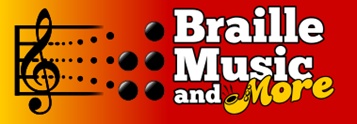Music education is a harmonious journey where the notes and rhythms dance with each other with curious minds. Through this, the universal language of music is distributed among all the individuals. However, individuals having visual impairments can face some challenges in learning traditional music. This is the point where the enchanting world of braille sheet music steps in and offers a key to unlock the door of musical education for those who are visually challenged.
In this blog, we will discuss the role of braille sheet music in music education. Let's start!
Understanding the Basics
Braille sheet music provides a tangible visual representation of the musical note. The notes are translated into a set of raised dots that can be felt using the fingers. It was invented in the 19th century by Louis Braille. This innovative method has opened up an array of possibilities for blind musicians, making it possible for them to comprehend and read music independently.
Enhancing Accessibility
One of the main benefits of Braille sheet music is its capacity to provide music education to the masses. As sighted people learn to read sheet music using traditional methods, visually impaired musicians are able to learn the same techniques by learning Braille notation.
This means that everyone, regardless of their ability to see, has the chance to experience the pleasure of creating music.
Empowering Independence
Imagine the excitement of playing a song without the need for memorization or assistance. Braille sheet music enables blind musicians to do the same. The use of the visual representation of musical components helps them perform compositions without difficulty and creates a sense of independence in the musical process.
Learning by Touch:
For a lot of visually impaired musicians, touching is the primary method of expression and learning. Braille sheet music works seamlessly with this approach to touch that allows people to be able to feel the change of notes, and discerning subtleties in rhythm, pitch, and dynamic.
With the help of their senses, it is possible to grasp the intricate aspects of a piece of music while deeply integrating into this art form.
Integrating Music Education into Programs
The inclusion of the use of Braille sheet music in educational programs for music is an essential step in promoting inclusion. Teachers can utilize this method of teaching to students who are visually impaired and ensure they receive the same level of instruction that their sighted counterparts receive.
This kind of integration does not just break barriers but also creates an environment in which everyone can develop and learn.
Technology's Role in Advancement
In our digital age, technology plays an essential part in improving accessibility. Braille sheet music has evolved to the changing times, using electronic formats and devices that make it more accessible for musicians with visual impairments to learn and use music.
With everything from digital Braille displays to software for music notation, technology is a great partner in improving the learning experience for those who are visually impaired.
Promoting Inclusive Music Communities
The Braille sheet music is not just for the musician's individuality, but it encourages the development of community-based music that is inclusive. As more teachers, musicians, and institutions adopt their use of Braille notation, the barriers that kept visually impaired people from their sighted counterparts start to fall away.
The integration of Braille not only improves the musical landscape but also promotes collaboration and diversity.


No comments yet